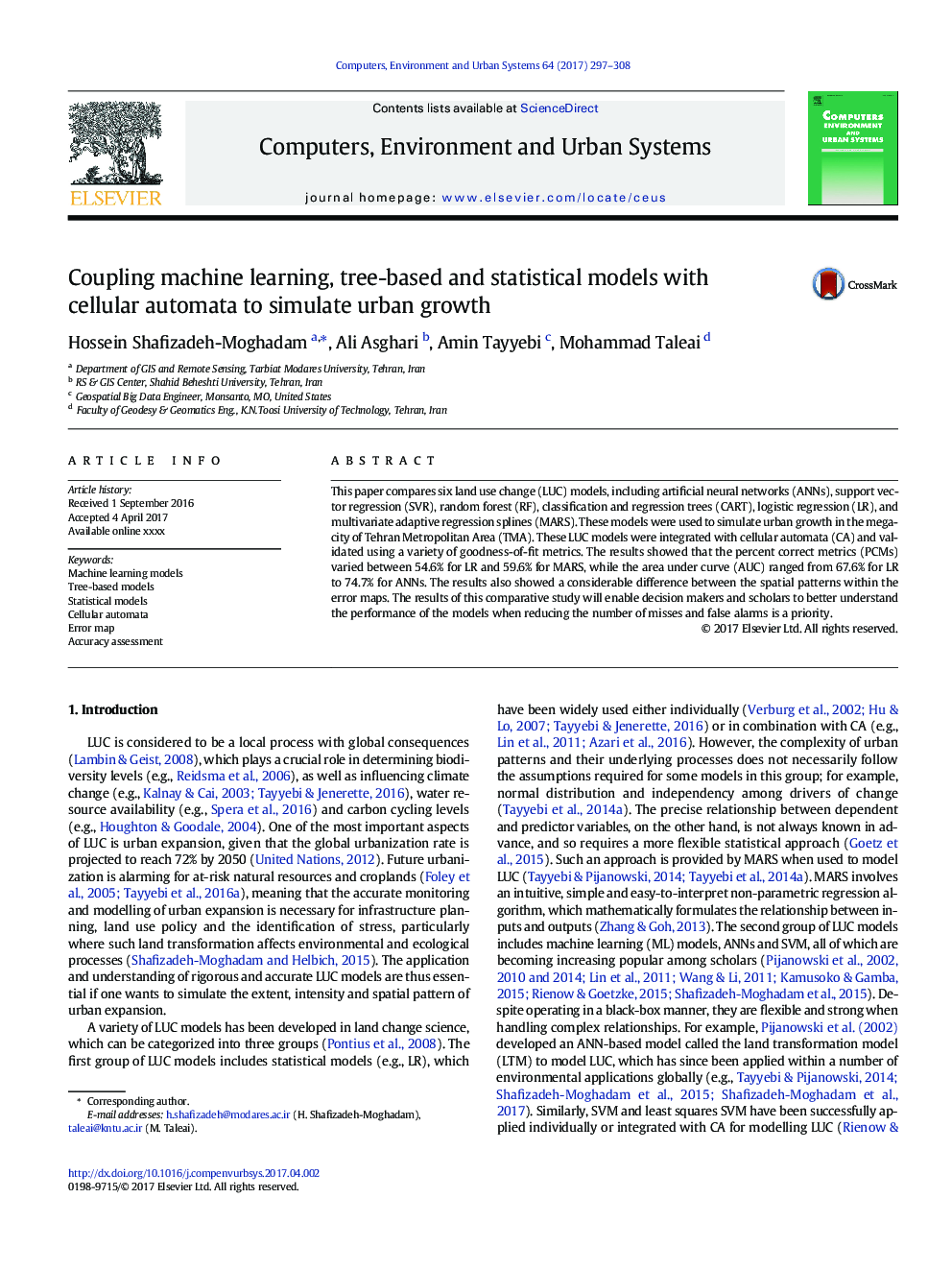| Article ID | Journal | Published Year | Pages | File Type |
|---|---|---|---|---|
| 4965157 | Computers, Environment and Urban Systems | 2017 | 12 Pages |
Abstract
This paper compares six land use change (LUC) models, including artificial neural networks (ANNs), support vector regression (SVR), random forest (RF), classification and regression trees (CART), logistic regression (LR), and multivariate adaptive regression splines (MARS). These models were used to simulate urban growth in the megacity of Tehran Metropolitan Area (TMA). These LUC models were integrated with cellular automata (CA) and validated using a variety of goodness-of-fit metrics. The results showed that the percent correct metrics (PCMs) varied between 54.6% for LR and 59.6% for MARS, while the area under curve (AUC) ranged from 67.6% for LR to 74.7% for ANNs. The results also showed a considerable difference between the spatial patterns within the error maps. The results of this comparative study will enable decision makers and scholars to better understand the performance of the models when reducing the number of misses and false alarms is a priority.
Related Topics
Physical Sciences and Engineering
Computer Science
Computer Science Applications
Authors
Hossein Shafizadeh-Moghadam, Ali Asghari, Amin Tayyebi, Mohammad Taleai,
